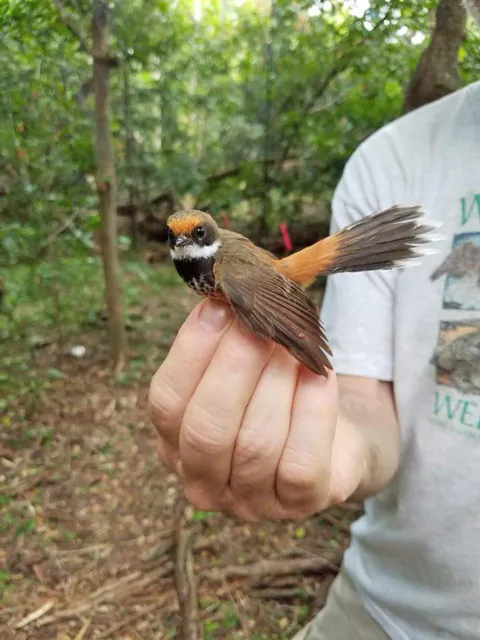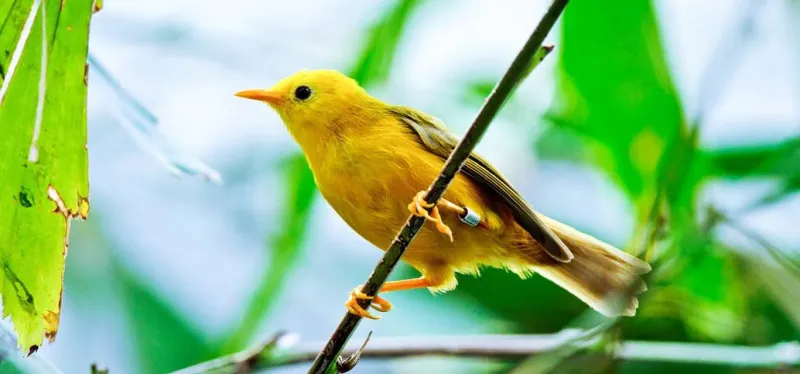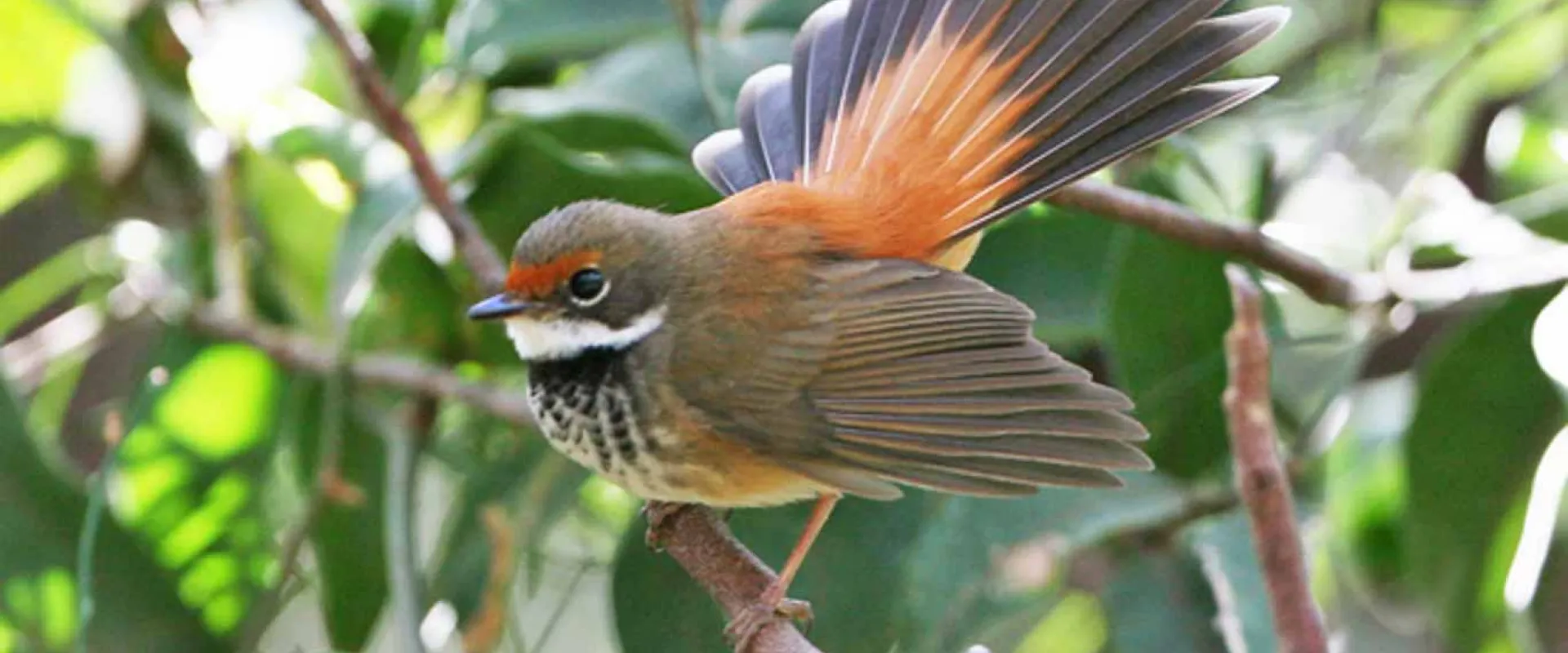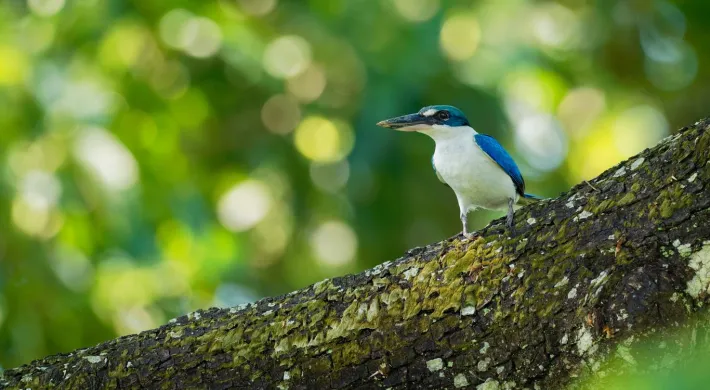Written by Ken Reininger, retired General Curator of the North Carolina Zoo
When I first began working on the North Carolina Zoo’s bird conservation project in the Northern Mariana Islands, I learned of the local legend of the Chichirika. From the culture of the native Chamorro people who settled these islands some 4,000 years ago, the legend is about one of the birds we are working with – the Rufous Fantail. According to the legend, this tiny bird with a flashy reddish-brown tail would lure children deep into the forest and become lost if they were not careful when away from the village. Unfortunately, the legendary Rufous Fantail can no longer be found on Guam, the largest island in the Mariana chain. This project is working today to prevent that from happening on other islands as well.
This project began in the mid-1980s when biologists saw the severe impact a non-native snake was having on Guam's local birdlife. The brown tree snake, accidentally introduced to the island during World War II, was a predator; the local birds had no defenses against since no snakes had ever inhabited the islands before. The biologists at first hoped to rid Guam of the snake, but quickly realized it was too late for that as research indicated there were as many as 2 million snakes on the island. Switching strategies, biologists hoped to remove some of the remaining native birds and send them to zoos before they were gone. This has worked to a limited extent for only two of Guam’s bird species, which remain on Guam today only in snake-proof captive enclosures. Twelve of Guam’s bird species were wiped out by the snake, five of which were found nowhere else in the world, and three of which are now extinct.

Rufous Fantail
As efforts to hang on to what was left of Guam’s birdlife continued, biologists turned their concerns to other nearby islands in the Mariana chain. The islands of Saipan and Tinian are less than 150 miles from Guam with established human populations and regular human movement to and from Guam. Worries that the snake would find its way to these islands and endanger the birdlife on them became a focus. Once again, switching strategies, biologists planned to capture birds from Saipan and Tinian and move them to the outermost islands in the chain. Those islands, with no human settlements and very limited human movement, would hopefully become safe refuges from the snake. This is where the North Carolina Zoo’s staff became heavily involved.
Using our skills for capturing birds with fine mesh nets called mist nets, and our experience with keeping birds under human care, the Zoo sent staff to Saipan and Tinian to help with these efforts for more than ten years now. Birds are captured from these islands, held for roughly two weeks to ensure they are healthy, then transported by boat to the outer islands for release. To date, nearly 700 birds of 5 different species (including the Chichirika) have been successfully moved to three different refuge islands, and the work is planned to continue for ten more years.

Ken Reininger holding a Rufous Fantail
When I began working in zoos, I was fascinated by the close contact with exotic animals and the challenge of providing care for them. But as the years went by, I realized keeping these animals under human care could only be justified if I was doing something really meaningful to help them survive in the wild. I had a responsibility to do so. Working on this project has allowed me to meet that responsibility, and I am forever grateful for that opportunity.

Golden White Eye
Today on Guam, the introduced European house sparrow has replaced some of the native birds, and it now is sometimes mistakenly called the Chichirika of legend by locals. But we are working hard to ensure the memory of the real Chichirika is not lost forever.

